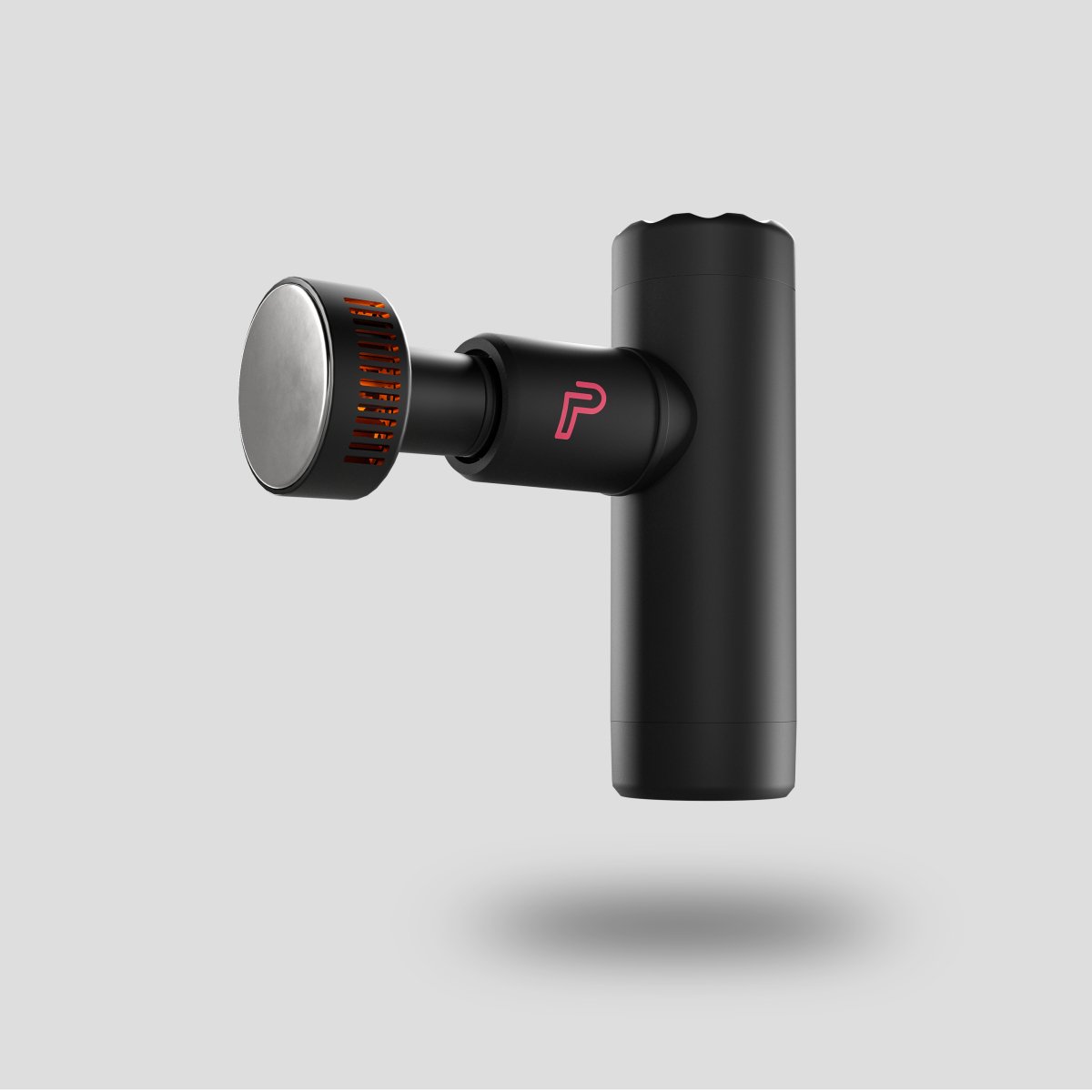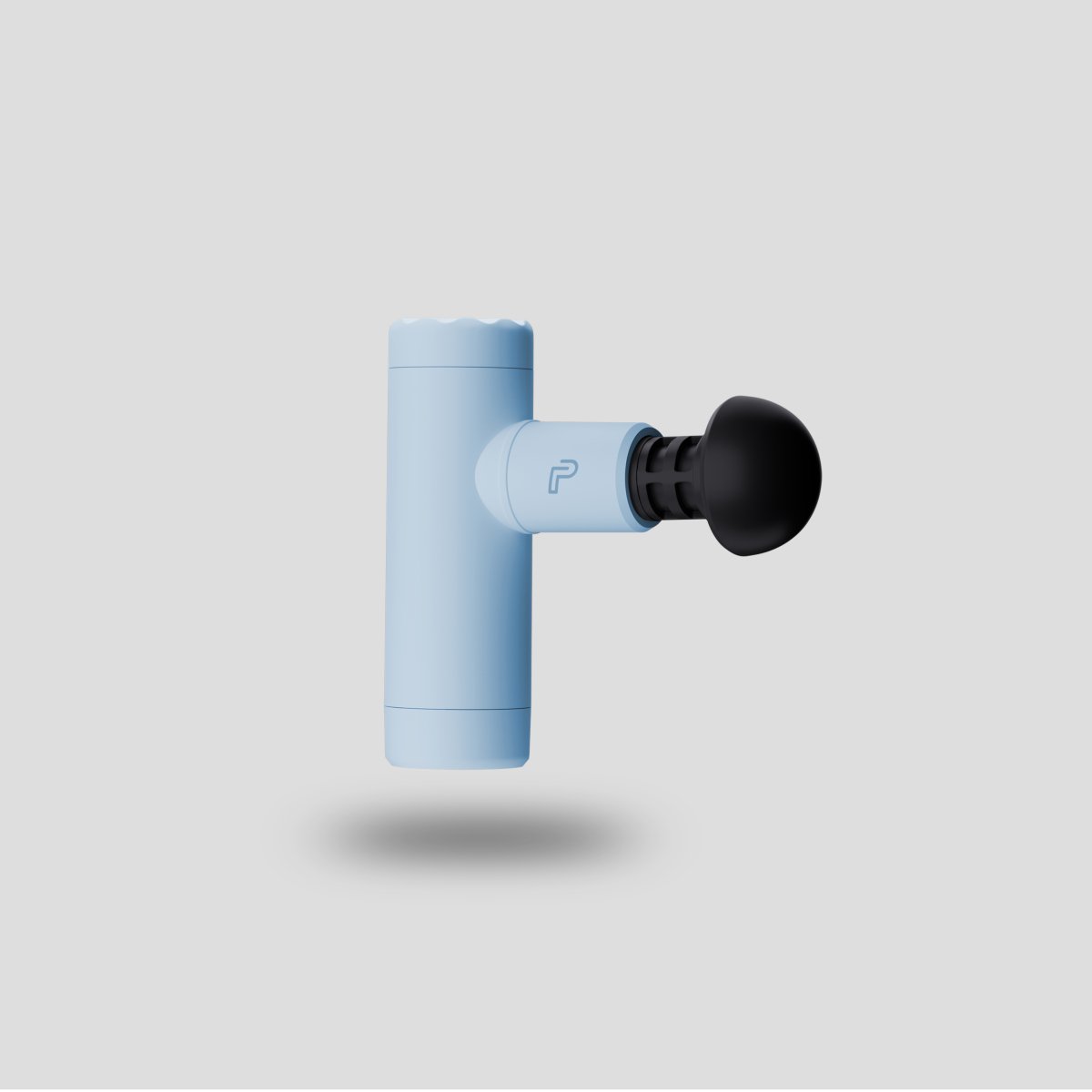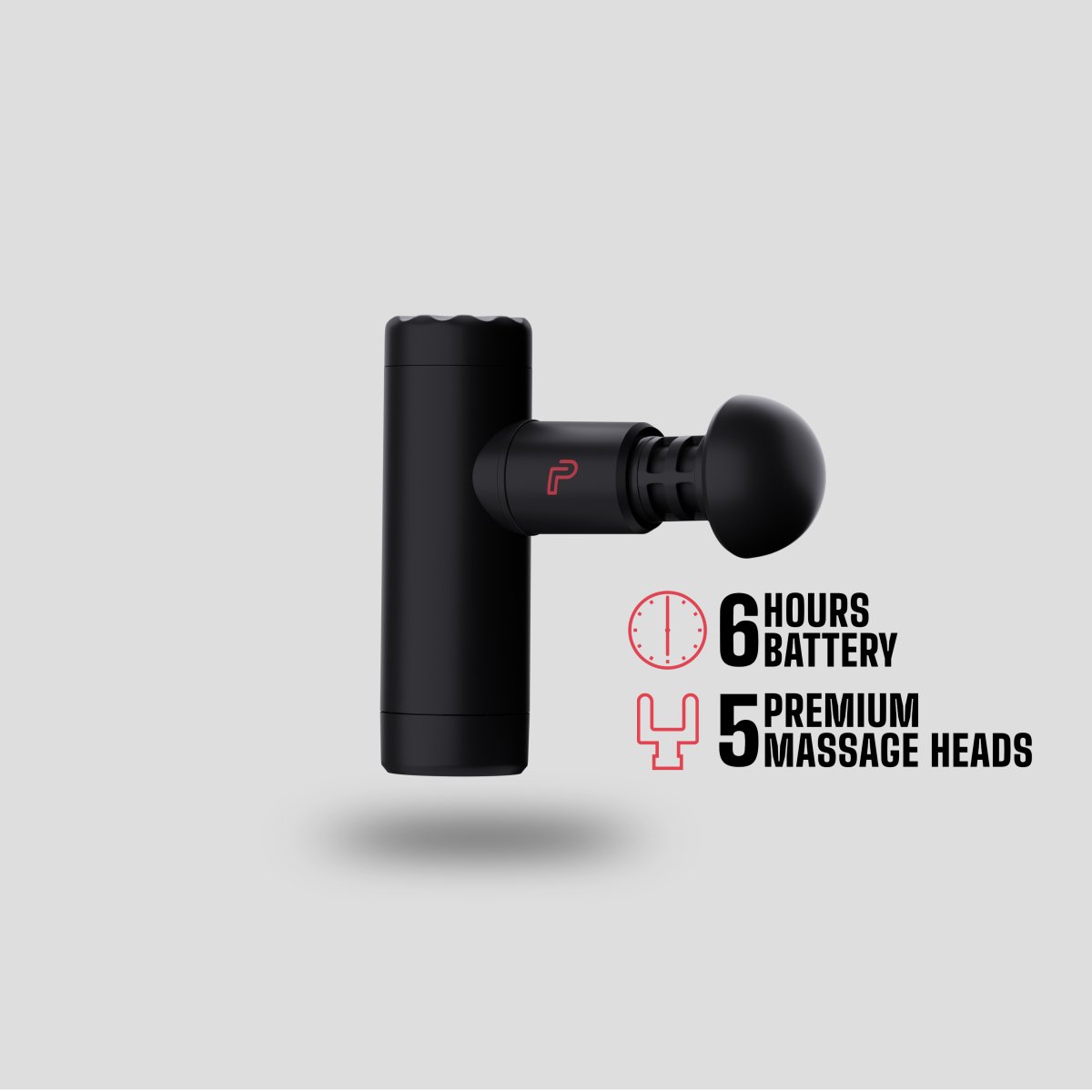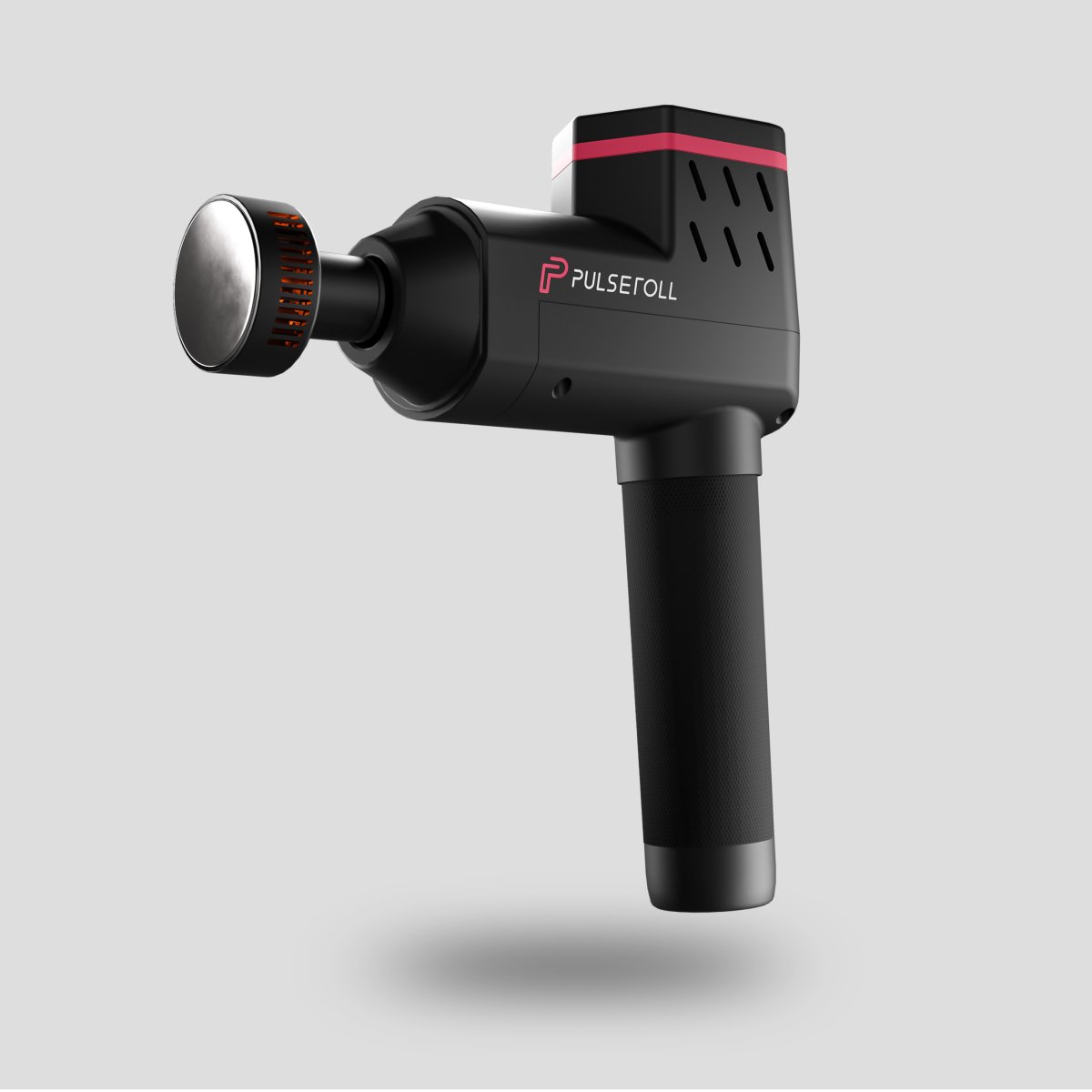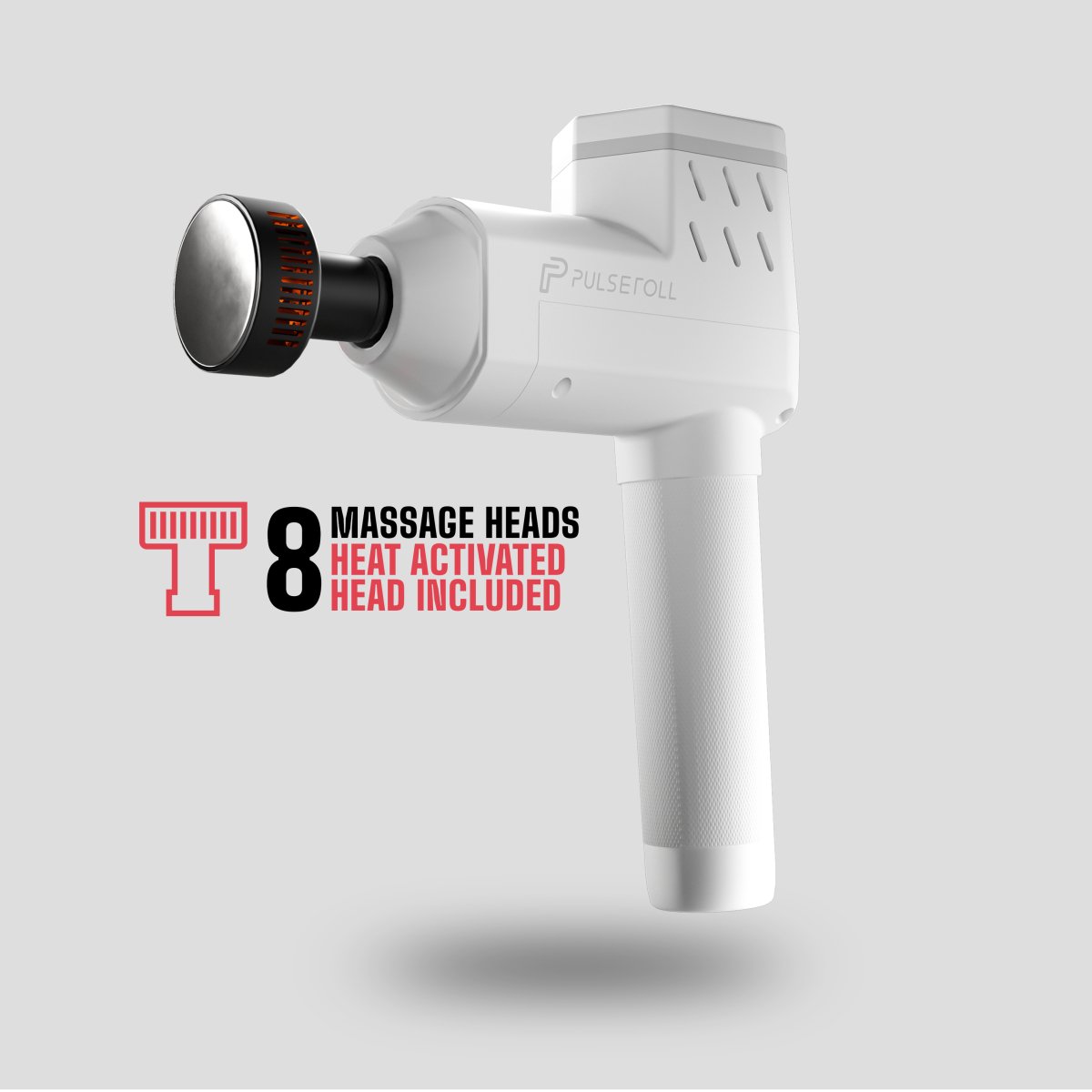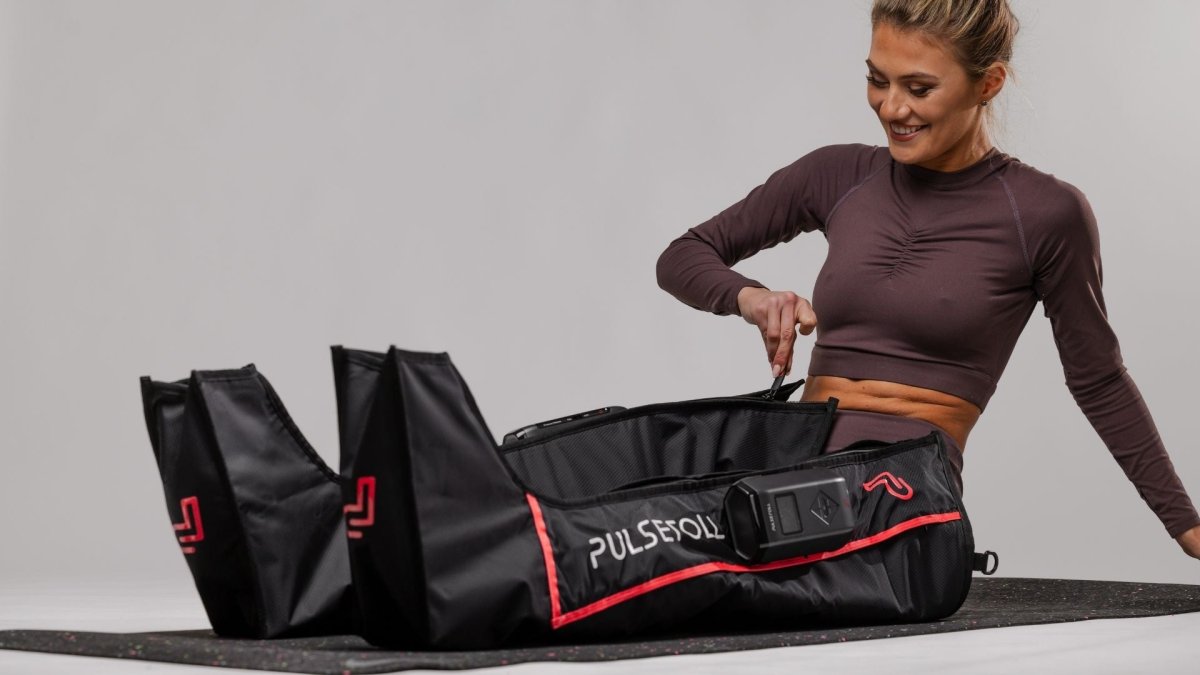Do you want to know how to relieve sore muscles in your thighs? Sore thigh muscles can lead to pain, restricting you from moving your thighs properly. As a result, you face difficulty walking, running, or bending your legs while sitting or lying.
Thigh soreness is common amongst runners and athletes, but it does not only pertain to the athletic demographic. Many people use massage therapy tools to deal with this issue, while others prefer exercise and dietary solutions.
First and foremost, it is important to understand why thigh muscles become sore and how long the pain lasts before learning how to relieve sore muscles in the thighs. This comprehensive guide includes everything you need to know.
Why Do Thigh Muscles Become Sore?
Before learning how to relieve sore muscles in the thighs, we must first understand why thigh muscles become inflamed. Some of the reasons below can attribute to painful thigh muscles after a workout.
- Overuse of muscles: This is the most common reason for soreness. When you perform exercises such as squats or running for too long, it can cause muscles to become tender and even painful.
- Sprain and strain: Thigh pain can be a symptom of muscle sprain and strain. Tissue injury in both these conditions can lead to tenderness and pain.
- Blood clots: Sometimes a blood clot in a blood vessel can cause tenderness and soreness. This condition requires immediate medical attention.
How Long do Sore Thigh Muscles Last?
The time it takes for muscle pain to subside depends on your body’s natural healing process and the type of strain caused to the muscles. The two types of soreness your muscles can experience after an intense workout, exercise, or physical activity are seen below:
Acute Muscle Soreness
Acute Muscle Soreness occurs soon after you finish a physical activity. You may feel pain in your thigh or legs or experience stiffness.
This condition is usually temporary and short-lived. The pain may eliminate moments after you stop doing the exercise. It usually occurs because the active muscles lack adequate blood supply.
Delayed Onset Muscle Soreness (DOMS)
The muscle pain and soreness you experience 24-48 hours after an intense workout is known as Delayed Onset Muscle Soreness (DOMS). It is common among athletes and fitness enthusiasts as a result of muscle contraction. The muscle contraction can lead to minor muscle tears, causing moderate to severe pain.

Heavy exercises are more likely to cause delayed soreness, but this is not the only reason for DOMS. It can be caused by muscle contraction or any other type of exercise or physical movement.
So how long do sore thigh muscles last?
- It usually takes 2-6 days to treat sore muscles and get rid of the pain and inflammation completely.
- If you are suffering from acute muscle soreness, it might take a few hours to eliminate the pain if treated correctly.
- However, if you are experiencing DOMS, the soreness may take up to three days to begin to ease.
Sometimes, you may experience prolonged stiffness and wonder, “why are my muscles still sore after 4 days?”. You could be experiencing both Acute Muscle Soreness and Delayed Onset Muscle Soreness. The acute soreness transits into DOMS, and the inflammation continues even days after physical activity.
How To Relieve Sore Muscles In Legs
Muscle soreness makes walking, working out, and running difficult. So, how do you heal sore thighs fast? You must learn how to relieve sore muscles in your thighs to prevent yourself from discomfort. Whether it’s your quads, hamstrings or any other thigh muscles causing you problems, you can try the following effective tips to get rid of them.
Rest the Sore Muscles
The primary method to relieve tender muscles is to rest them. Make sure they have enough time to rest to generate the natural body’s response to pain. It will help ease soreness and lower the pain.
Resting the aching muscles refers to resting them for 24-48 hours. After that, you must proceed to some other soreness-relieving methods.
Foam Rolling
Using a foam roller to massage inflamed thigh muscles can help loosen them. It is an effective tip to reduce acute and delayed soreness and accelerate muscle recovery. You may include it in your regular workout routine to strengthen your thigh and leg muscles.

It is a worthwhile warm-up and cool-down technique, preventing muscles from getting exercise-induced muscle damage due to expansion or contraction during a workout. The frequent muscle contraction and expansion causes structural damage in microfibres leading to inflammation and pain in damaged muscles. Ensure you do not overdo it, as excessive foam rolling can lead to injuries and increased stiffness.
Try Hot and Cold Therapy
As the name indicates, the method combines two treatments combining hot and cold temperatures. It tightens and relaxes sore muscles to ease tenderness and pain. Cold therapy works best when the inflammation is new with a high pain level.
For cold therapy, use an ice pack to rub the sore muscles. Keep rubbing for around 15-18 minutes, and avoid keeping it in the same spot for a long time. Gently rub it in a circular motion and listen to your body. The ice leads to a temperature drop that tightens the blood vessels.
As a result, it reduces the blood flow to the sore area, reducing swelling and pain. On the other hand, you can opt for hot therapy after 48-72 hours of soreness. Use a heating pad to loosen the tight muscles and improve blood flow.
The increased blood flow transfers oxygen to the sore muscles. The fresh addition of oxygen and nutrients removes the toxins and helps the muscles regain strength.
Massage Therapy
Amongst other soreness-relieving methods, massage therapy is one of the most worthwhile. It plays a significant role in releasing and relaxing muscle tension. As a result, the muscles regain their flexibility, which had been reduced due to tenderness and pain.

You can go to a professional to get a thigh massage or use some massaging tools to do it yourself at home. If you feel discomfort, consult an expert.
Epsom Salts Soak
You can speed up the post-workout muscle recovery through warm Epsom salts soak. This all-natural remedy is a cost-effective way to relax your muscles after an intense workout. It reduces stress, inflammation, and pain in the thigh muscles.
Take around a gallon of warm water and dissolve 1-1.5 cups of Epsom salt. Mix it well and soak your legs in it for 15-20 minutes. The remedy has no side effects, but consult your GP if you have any skin irritations or allergies.
Compression Therapy
Wear compression garments to cover the tight thigh muscles and help them recover faster. Wearing them after a workout prevents soreness and keeps your muscles safe from any potential injury.
Compression socks or garments wrapped around your thighs can prevent swelling while supporting your muscles. You may opt for a soft-fabric, elastic compression band to wear comfortably around your thigh.
Dynamic Stretches
After adequate rest, you can try dynamic stretches to prevent pain and enhance flexibility. Dynamic stretches refer to repeated stretching or movement of muscles and joints, unlike static stretches, where you stretch between intervals.

A dynamic stretch is a good warm-up exercise that prepares your body for the workout. Walking lunges and arm circles are all examples of dynamic stretches.
How To Get Rid Of Sore Legs From Squats?
Do your legs hurt after long squat sessions? The part of the leg that usually becomes stiff after a squat workout tends to be the quads. The quads are a group of muscles, located at the front part of your thigh:
- Rectus femoris
- Vastus lateralis
- Vastus medialis
- Vastus intermedius
Keeping your quads in top condition should be a priority for everyone, regardless of how seriously you take exercise. Strong quads will increase your power when performing most sports, but training and lifting heavy to build the quads can lead to strains and other injuries.
You can use the following tried and tested soreness-relieving tips for getting rid of sore legs.
Improve your Squat Technique
One of the leading reasons for muscle pain after squats is an incorrect squatting technique. Even just with body weight squats, sometimes the technique might not be wrong but unsuitable for you. For instance, you may be trying a pro-level technique at the beginner level, and getting it wrong. It may cause excessive pain in your muscles 24-48 hours post-workout.

The muscles may become tight and difficult to move. You need to change your technique to get better results in such a situation.
You may need to adjust your stance or change your form. Some squat variations that are likely to cause aching muscles include front squats, pistol squats, narrow stance squats, and goblet squats.
Warm Up
Warming up is essential to reduce the risk of inflicting an injury on muscles. Regardless of your fitness levels, it prepares your muscles for the exercise so they don’t suffer any strain, sprain, or tear. You can warm up by running, stretching, or jumping on the spot. Massaging your legs with a vibrating foam roller or other massage therapy tools is also effective.
Reduce the Frequency
Reducing the volume or number of squats you do each set can also help reduce thigh soreness. Higher intensity and volume can lead to delayed soreness. If you have been doing 8 sets of 5 squats, try expanding it to 10 or 12 sets of 3 squats each.
How do you massage your Thigh Muscles?
A massage is an effective soreness-relieving exercise for your thighs and legs. It improves blood flow in the aching muscle area and helps eliminate stiffness and pain. However, it is important to know how to massage your legs properly; otherwise, it can do more harm than good.
Using a Foam Roller
You can use a foam roller or massage gun to massage your legs or hand. The former is more effective for thighs as it better targets large thigh muscle groups. Here is how you can massage your legs using a foam roller.

Both Legs at the Same Time
- Lay on the floor face down and place the foam roller under your quads just above the knees.
- Arms should be placed on the floor with the elbows under the shoulders.
- Slowly push yourself backwards, rolling the foam roller up the legs.
- Then change direction and slowly roll back in the opposite direction.
- Find any trigger points, hold for 30 seconds, and let the vibrating foam roller reduce muscle tightness.
A longer foam roller is better because you can comfortably fit both legs on!
One Leg at a Time
- Face down on the floor, and place the foam roller under your right quad just above the knee.
- Make sure the left leg is bent out to the side at a 90-degree angle.
- Place your arms on the floor with the elbows under the shoulders.
- Slowly push backwards, rolling the foam roller up the leg.
- Change direction and slowly roll back in the opposite direction.
- Find trigger points, hold for 30 seconds, and let the vibration technology do the work.
- Change legs and work on the left side!
These quick and easy foam roller quads exercises will help strengthen your quads and prevent injuries.
Using a Massage Gun
Another percussive massage treatment tool is a massage gun. It is a handy massage tool that you can use for targeted massage therapy on a particular muscle area. You can easily use it on your upper and lower legs. It is an easy-to-use, portable, and rechargeable gun with different head shapes and speed settings.
How to use it?
- Sit on a chair or the ground so your hand can easily reach the sore thigh area.
- Choose the head attachment and power setting (we recommend beginning with a lower power setting and gradually speeding up).
- Move the massage gun on your thigh around the sore muscles. Avoid targeting the inflamed muscle area directly.
- Keep moving the gun in a circular or to-and-fro motion and spend 2-3 minutes on each muscle area.
Self-Massage
If you do not have any massaging tools, you can do a self-sports massage on your thighs. It works as well as massaging with equipment, but it takes more effort and time. Use your hands to push your muscles up from the knee towards your hip bone. Adjust the pressure of your hands according to your tolerance level.
This massage will release tension in the muscles. If only a specific area of your thigh is hurting, massage it by moving your hands in a circular motion. You can also use your thumb to apply pressure, again moving it in a circular motion.
Can Drinks Help Sore Muscles?
There’s more you can do besides massages and exercise to relieve your sore muscles. It might surprise you that some drinks can accelerate the healing process. They might not eliminate pain, but they can speed up recovery.
You can consume the following drinks to give your sore muscles a sigh of relief:
Water
A glass of clean water can do wonders for your body and muscular health. It helps reduce inflammation, soreness, pain, and stiffness.
Make sure to drink 6-8 glasses of water each day. This is the average recommended amount of water. You can always drink more if you feel the need to.
Drinking water may not instantly relieve the pain, but it allows your body to function properly. Maintaining the required level of fluids in your body can help you recover better from injuries and soreness. Besides drinking plain water, fruits are also a good source of water.
Beetroot Juice
Beetroot juice is a good source of dietary nitrates. Dietary nitrates stimulate mitochondria in your cells by supplying oxygen to the muscles. As a result, muscle efficiency improves, and the cells recover any damage faster. You can have a glass of fresh beetroot juice after a workout, intense exercise, or long-distance running.

Another benefit of beetroot juice is that it reduces the risk of delayed muscle soreness caused after hours of intense workouts. You can drink both to accelerate the recovery and prevent muscle damage in advance.
Milk
Your muscles need protein to improve their functionality, and milk is a great source of protein. You might not know how to relieve sore muscles in your thighs by consuming milk, but you must know that it is one of the best drinks to help muscle recovery. It can help in quicker muscle recovery while fueling your body with the strength and energy you need to recover from the soreness.
You can drink milk or consume dairy products like yoghurt and cheese. The carbs in these items help muscles maintain adequate levels of glycogen and support growth. In short, milk and milk-based products must be a part of your diet if you want to relieve painful thigh muscles.
Cherry Juice
Cherry juice has anti-inflammatory and antioxidant properties, which are beneficial for recovering sore thighs. It can be a good drink to support your muscular health and recovery. It is also believed to support and strengthen joints.
Athletes and runners can drink fresh cherry juice to reduce the risk of DOMS. Be aware that packaged juices from supermarkets may have a high sugar content, which is pro-inflammatory. When buying packaged juice, thoroughly check the ingredients and choose the option with lower sugar additives.
Protein Shake
You can maintain adequate protein levels in your body by drinking protein shakes. As the name indicates, they are packed with protein essential for muscle growth, strength, and recovery. Include protein shakes in your workout and rest day routines to support protein synthesis in your body.
How to Relieve Sore Muscles in Thighs Faster?
Inflamed muscles are painful, and you look for quick solutions to ease this pain. Luckily, some amazing self-massage tools can help relieve sore thigh muscles faster. Make sure you follow the right procedure and keep all precautions under consideration.
Performing foam roller quads exercises will drastically reduce muscle soreness and improve all aspects of your mobility. Also, keep your diet healthy and drink a lot of water to remove the toxins from your body. It will help in faster aching muscle recovery.
The Bottom Line
Muscle soreness is a common problem, and you must know how to relieve sore muscles in the thighs. Are your muscles still inflamed after trying all of these tips? You might need to visit a GP or physiotherapist.
Want a quick and easy solution? Keep some soreness-relieving tools at your home to get rid of the stiffness and pain easily at your home.
Frequently Asked Questions
How sore is too sore to work out?
Tender thigh muscles do not restrict you from working out unless the pain is too severe. However, if the inflammation does not alleviate or reduce, even after resting, massaging, stretching, and trying other therapies, you may stop working out. Instead, visit a doctor or physio.
How do you loosen tight leg muscles?
You can loosen tight leg muscles through stretching and massage. You may also opt for active recovery exercises to relax the tight muscles and gradually increase flexibility.
Is it OK to exercise with sore muscles?
Yes, it is OK to exercise with sore muscles. Painful muscles are sometimes a result of a new or unfamiliar exercise. The muscles may become delicate but gradually get used to the exercise. Putting them completely to rest may increase stiffness and pain; therefore, exercising is better as long as it does not worsen the aching muscles.
What is a natural remedy for muscle pain?
The natural remedy to relieve muscle pain is hot and cold therapy. Moreover, warm Epsom salts soak, massages, and a healthy diet can significantly accelerate recovery.
Should you push through with sore muscles?
No, you should not push through soon after the soreness has started. Your muscles need some time and rest to recover from the damage caused by an intense workout. Take some time and opt for low-intensity aerobic exercises for your muscles to recover.
Is walking good for sore thigh muscles?
Yes, aerobic exercises like walking are good for sore thigh muscles. You can do some walking on a rest day or after a workout. It helps maintain the optimum level of blood flow to the muscles and aids the recovery process.
What helps muscles recover faster?
A healthy diet, massage, stretching, and exercises can help muscles recover faster. Don’t forget to give them a rest before you begin with the recovery treatments.
What does it mean when both thighs hurt?
When both thighs hurt, either the muscles in your thighs are damaged or hurting. The overuse of muscles or an injury can cause your thighs to hurt. They may also hurt due to muscle strain, sprain, or health issues.






